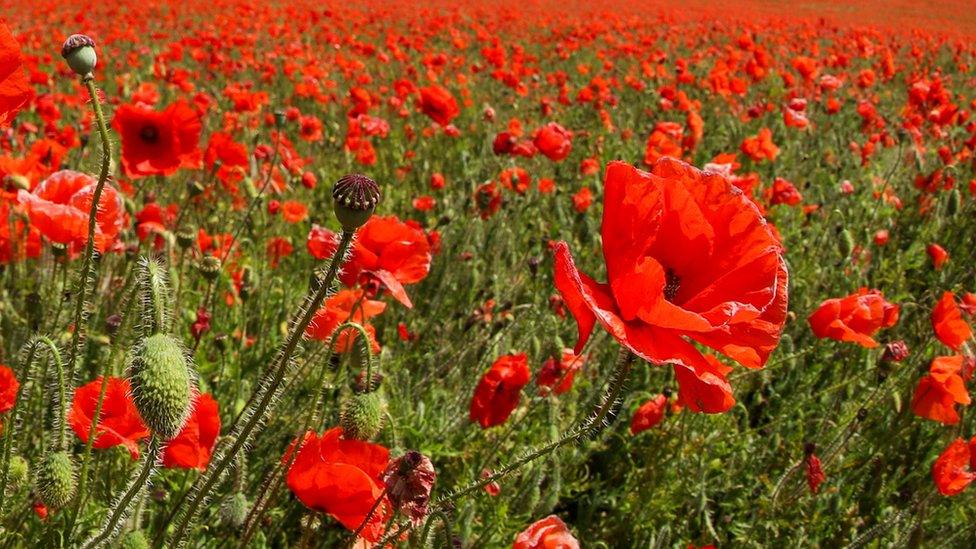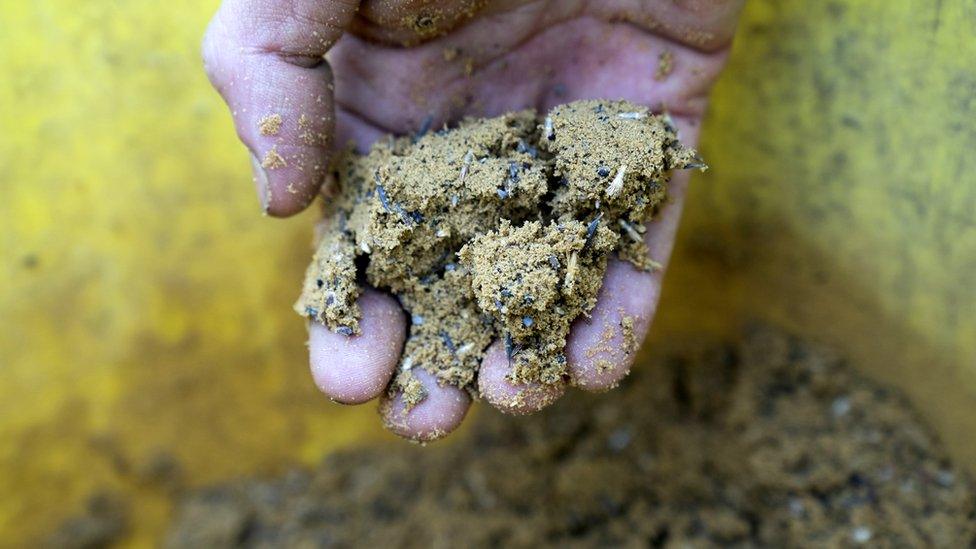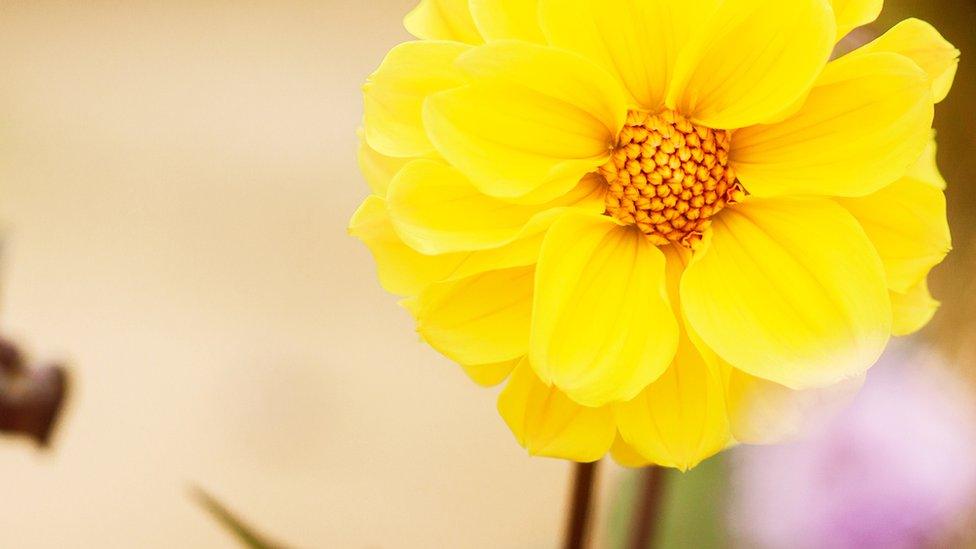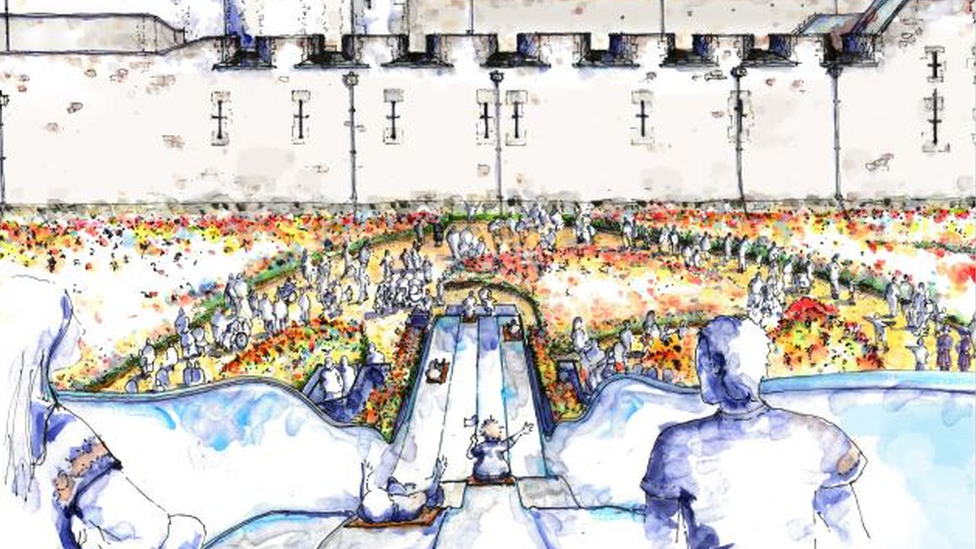Tower of London's moat to be filled with wildflower meadow
- Published

A gardener rolls over seeds sown by hand in the moat at the Tower of London
A wildflower meadow is being sown in the Tower of London's moat to celebrate the Queen's Platinum Jubilee.
More than 20 million seeds, including cornflowers, poppies and marigolds, are due to start blooming from June.
The cornflowers represent blue water filling the historic fortress's trench, and will contrast with the red and yellow of the poppies and marigolds.
Nigel Dunnett, a professor of planting design, picked the combinations to heighten the colour effect.

Cornflowers will represent water in the flower-filled moat
Prof Dunnet described it as the most "thrilling" project he had been involved with.
He added: "It has been a real combination of art and science to develop the final planting scheme for the moat.
"With the seeds now going into the ground, I can't wait to follow their progress, from the first green shoots emerging within weeks, through to the full spectacle of the amazing ocean of flowers filling the moat in the summer."

Poppies have been chosen for their bright red colour
Other species have been chosen to make the display season last as long as possible.
Snapdragon-like fairy toadflax and baby's breath will bloom at the very beginning of the summer while sunflowers, cosmos and rudbeckias will flower into autumn. Plants have also been chosen to attract bees, butterflies and other pollinators.
Gardeners began by scattering the seeds by hand, and the sowing is expected to last a week.

Seeds have been mixed with sand for sowing
The horticultural experts have had to take into account where the shadows of the tower fall when planning where to place certain seeds.
Extensive landscaping work has been done to prepare the moat, with new winding paths edged in woven willow.
A slide will also allow visitors to shoot down into the moat on a mat and follow the route through the display, which includes a sound installation.
About 10,000 tonnes of soil have been shifted into place on a huge conveyor belt and deposited in the trench.

Corn marigolds attract bees and other pollinators
The moat was designed in the 13th Century to defend the fortress and has since been used as a medieval orchard, a grazing ground for Victorian livestock, and as allotments during World War Two.
When the display ends in September 2022, the new natural landscape created to support it will remain there as a permanent Jubilee legacy.
Tom O'Leary, from Historic Royal Palaces, said the ocean of flowers had been years in the planning.
"As the seeds go in the earth over the next few days, we are now directly collaborating with nature - which we hope will look kindly on us as we wait for the flowers to burst into life for June," he said.

Follow BBC London on Facebook, external, Twitter , externaland Instagram, external. Send your story ideas to hellobbclondon@bbc.co.uk, external
Related topics
- Published3 March 2022
